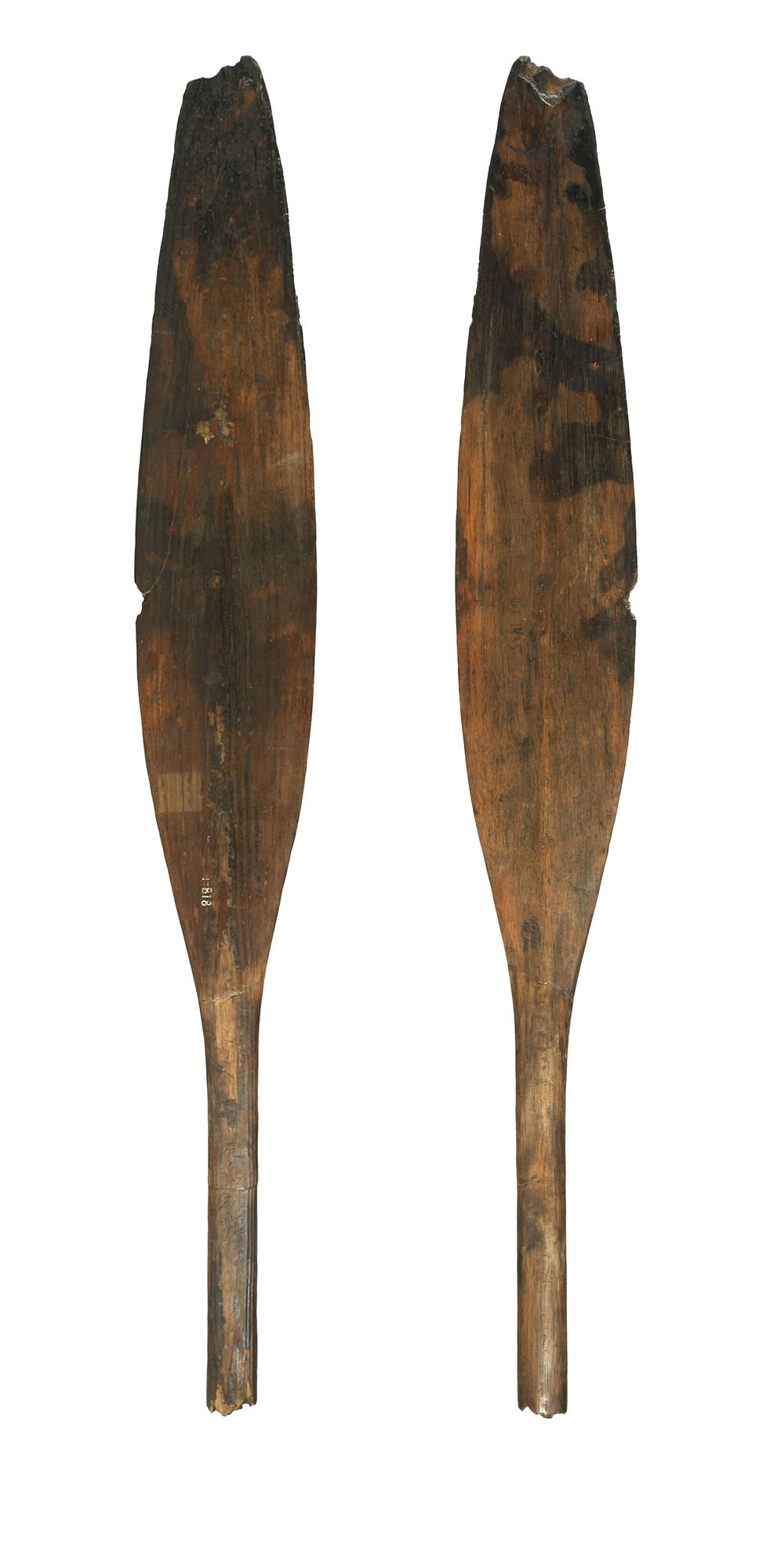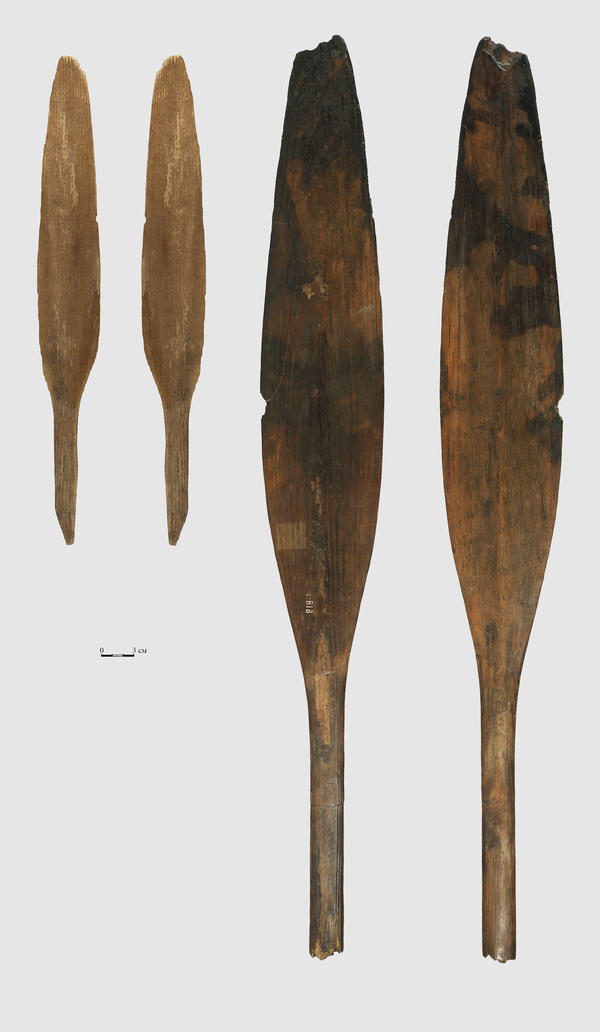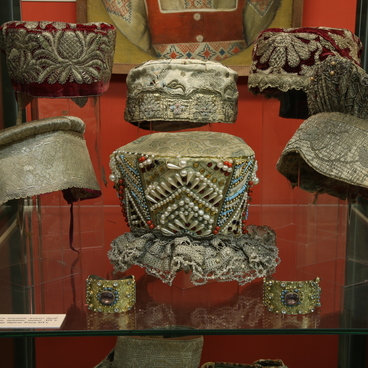The wooden oar was found on the Shigir peat bog, which is located seventy kilometers from Yekaterinburg. Archaeologists did not uncover a single boat or raft during excavations in the Sverdlovsk region. The discovered oar nevertheless suggests that ancient people who inhabited the Urals, used water transport.
#6
Unknown Author
Oars
#7
#8
Historians established that metal working tools had been used to make the oar and the notches on its surface support this hypothesis. It means that the oar could not have been made prior to the Iron Age, so its age is no more than 6 thousand years. The oar is fifty eight centimeters long.
#3
Oars from the Shigir collection. Photo E.F., Tamplon, processing S.N. Savchenko.
Ancient people initially controlled the raft with a long wooden stick, which pushed against the bottom. Such a pole enabled the inhabitants to move only in the coastal zone, and exclusively along the current. People started making the first oars when they noticed that water birds swam, paddling the water with their web feet. So, that was the time when flat boards with a handle emerged — they enabled to swim against the current all over the water body, not only near the shore.
#9
The oars were made of hardwood — oak and birch. The tree was dried up before people started working on it. They made a billet out of it, which was afterwards cut down with a sharp metal object. After that, the board was ground with quartz sand and polished with a piece of soft leather.
#10
There are several oars in the Shigir collection, which are very similar in shape and size. Besides them, there is another very interesting artifact in the collection — a small paddle. So far, archaeologists have not found out what it was used for. Perhaps it was a steering paddle to which a handle was attached. On the other hand, it could have been a children’s toy. Numerous archaeological finds suggest that, in ancient times, toys were the objects identical to those used by adults, only they were smaller in size. This is the way children, when playing, learned the skills necessary to survive in adult life. According to the third version, a small paddle came into play when navigating a boat in thickets — it was convenient for moving aside the stems of the aquatic plants.
#4
A small, presumably a child’s paddle close-up. Photo by Eugene Tamplon, processing by Svetlana Savchenko.
#11
The Shigir peat bog, where the oars were found, is located not far from what is now the city of Kirovgrad. Gold has been mined on the territory of the peat bog since the middle of the XIX century. To discover gold, the explorers had to penetrate a layer of peat eight meters deep. Gold miners found ancient objects made of stone, wood, bones, horns and teeth of animals in the peat deposits. In 1880, scientist Mikhail Malakhov undertook the first archaeological study in the area.
#12
the Sverdlovsk Regional Museum of Local Lore (SOKM)
читать дальшескрыть
00:00
00:00
1x
Oars
Размер
58x15x4 cm
58х15х4 cm
58х15х4 cm
Техника
Planing, sawing
0
Открыть в приложении
Поделиться





